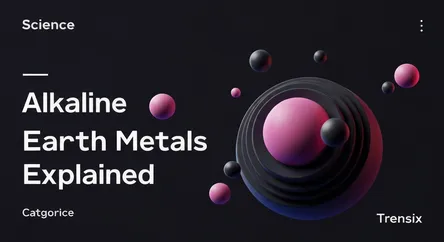Science
Alkaline Earth Metals Explained

An essential guide to the alkaline earth metals, their properties, modern applications, and impact on everyday life and health.
What is it?
The alkaline earth metals are the six chemical elements that make up Group 2 of the periodic table: beryllium (Be), magnesium (Mg), calcium (Ca), strontium (Sr), barium (Ba), and radium (Ra). They are shiny, silvery-white, and somewhat reactive metals. Their defining chemical characteristic is having two electrons in their outermost electron shell, which they readily lose to form cations with a +2 charge. This reactivity increases as you move down the group from beryllium to barium.
Why is it trending?
These elements remain perpetually relevant due to their critical role in technology and industry. Magnesium is used to create strong, lightweight alloys for the aerospace and automotive sectors, crucial for enhancing fuel efficiency. Calcium compounds are fundamental to the construction industry in cement and mortar. Strontium and barium find specialized uses in electronics, pyrotechnics (creating red fireworks), and producing high-quality glass, making them indispensable to various manufacturing processes that fuel modern innovation.
How does it affect people?
Alkaline earth metals are integral to human health and daily life. Calcium is the primary component of our bones and teeth and is vital for muscle function. Magnesium is another essential nutrient that supports nerve function and energy production, commonly used in dietary supplements and antacids. Barium compounds are used in medicine as a contrast agent for X-ray imaging of the digestive system. Even the radioactive element radium, while hazardous, historically pioneered medical radiotherapy treatments, showcasing the group's broad impact.